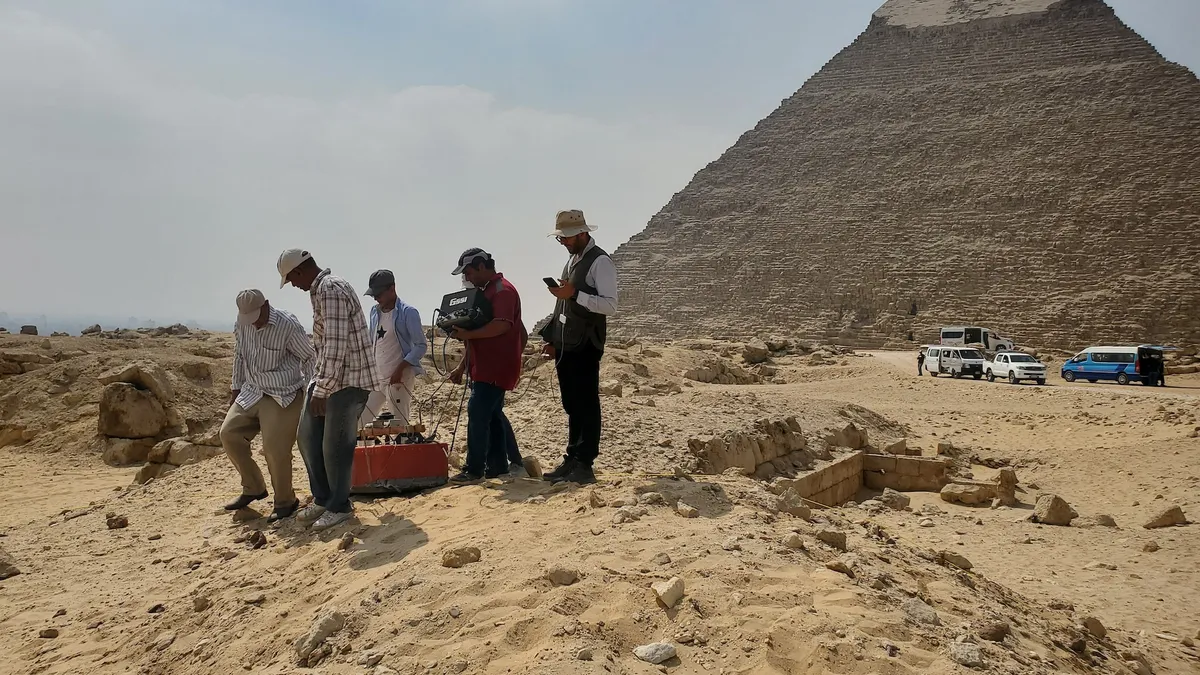
Journalist Graham Hancock travels the globe hunting for evidence of mysterious, lost civilizations dating back to the last Ice Age.
For many decades, archaeologists were convinced that the first people to arrive in the Americas came some 13,000 years ago, after the Ice Age glaciers melted. The White Sands footprints, whose age scholars estimated again, in a paper published this past October, by analyzing tree pollen and quartz grains in the sedimentary layers, provide the most conclusive evidence to date that humans were actually here much earlier, toward the end of the last ice age. It’s possible that they reached North America more than 32,000 years ago.
An enigmatic L-shaped structure found underground near the pyramids at Giza may be an entrance to a mysterious deeper feature below it. The team found an anomaly roughly 6.5 feet (2 meters) beneath the surface. It appears to be an L-shaped structure measuring at least 33 feet (10 m) in length, the team wrote in their paper, published May 5 in the journal Archaeological Prospection.
New research suggests it might be more correct to call the Stone Age the “Wood Age”… a new study published in the Proceedings of the National Academy of Sciences suggests that “Stone Age” might be a misnomer. Unlike stone, wood doesn’t age well. Wooden objects perish over thousands of years. Recently, however, thousands of wooden artefacts from the distant human past have been uncovered.
A recent pilot study published in the Journal of Psychedelic Studies has found preliminary evidence that psilocybin, when administered in a group retreat setting, can enhance psychological flexibility. The findings suggest that changes in psychological flexibility may play a crucial role in the therapeutic benefits of psilocybin experiences.
A pair of archaeologists have uncovered a strange series of rock art carvings that show boats and cattle – both vitally in need of water to work properly – in the middle of one of the driest parts of the African desert. The pair have published their findings in The Journal of Egyptian Archaeology.
:focal(713x539:714x540)/https://tf-cmsv2-smithsonianmag-media.s3.amazonaws.com/filer_public/28/ec/28ec3d59-8bc5-4f28-b509-1c53dc070e48/jun2024_e17_prologue.jpg)
